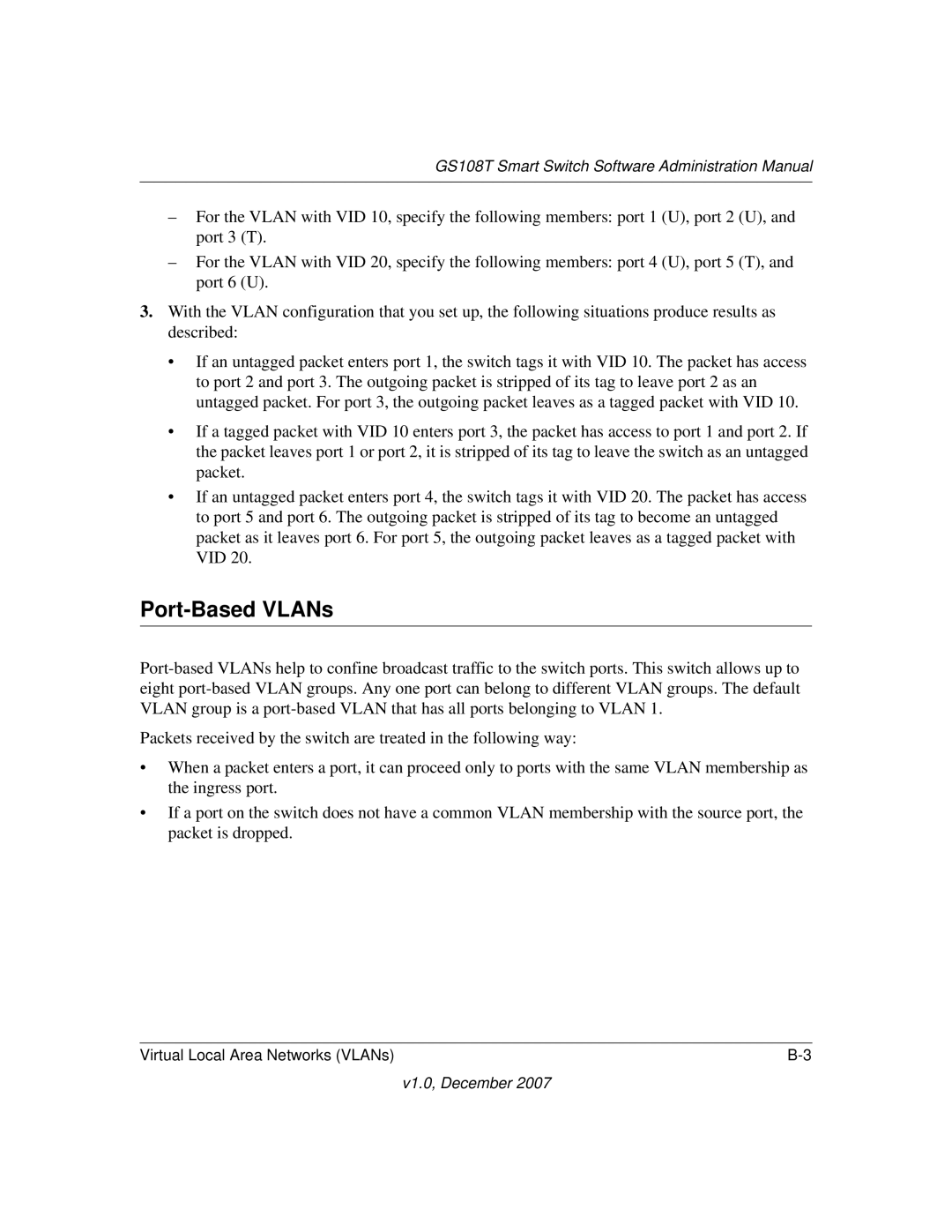
GS108T Smart Switch Software Administration Manual
–For the VLAN with VID 10, specify the following members: port 1 (U), port 2 (U), and port 3 (T).
–For the VLAN with VID 20, specify the following members: port 4 (U), port 5 (T), and port 6 (U).
3.With the VLAN configuration that you set up, the following situations produce results as described:
• If an untagged packet enters port 1, the switch tags it with VID 10. The packet has access to port 2 and port 3. The outgoing packet is stripped of its tag to leave port 2 as an untagged packet. For port 3, the outgoing packet leaves as a tagged packet with VID 10.
• If a tagged packet with VID 10 enters port 3, the packet has access to port 1 and port 2. If the packet leaves port 1 or port 2, it is stripped of its tag to leave the switch as an untagged packet.
• If an untagged packet enters port 4, the switch tags it with VID 20. The packet has access
to port 5 and port 6. The outgoing packet is stripped of its tag to become an untagged packet as it leaves port 6. For port 5, the outgoing packet leaves as a tagged packet with VID 20.
Port-Based VLANs
Packets received by the switch are treated in the following way:
•When a packet enters a port, it can proceed only to ports with the same VLAN membership as the ingress port.
•If a port on the switch does not have a common VLAN membership with the source port, the packet is dropped.
Virtual Local Area Networks (VLANs) |
